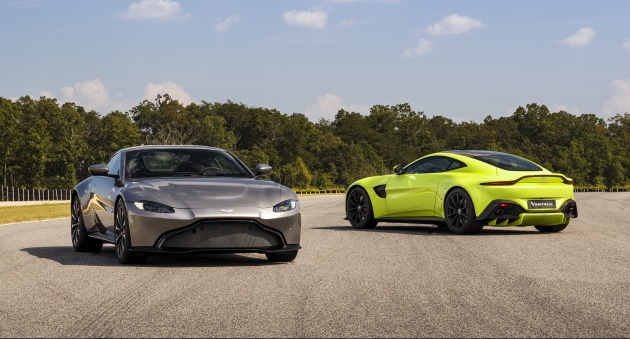The technical partnership between Aston Martin and Mercedes-Benz could extend to include the latter’s new 3.0 litre turbocharged inline-six engine in the Mercedes-AMG CLS 53, according to a report by Wheels. Currently, the DB11 is available with an AMG-sourced 4.0 litre twin-turbo V8, in addition to AM’s own 5.2 litre twin-turbo V12.
The use of inline-six engines will be a throwback to Aston Martin’s historical cars from the 1950s and 1960s, but the adoption has more to do with the increasingly stringent regulations regarding emissions.
“I’ve driven it. We got to drive one in Stuttgart at their test facility a few months ago, and it’s a very impressive engine for sure. With emissions regulations going where they’re going and getting harder and harder, we have to consider all powertrain options, and we are considering six-cylinders for the future,” said Aston Martin’s chief engineer Matt Becker revealed to Wheels.
“Previous Astons have had six cylinders – a long time ago – but I think with the CLS 53, the engine that has is a very complicated and clever engine and it’s something that could fit with the brand in the future,” he added.
Although it isn’t confirmed, the most likely recipient of the straight-six will be the new Vantage, which is being offered with an AMG unit. While a direct transplant isn’t that difficult, some fine tuning and tweaks will still be required. “For example, the AMG GT uses a seven-speed double clutch while we’ve got a ZF eight-speed auto, but our ratios are different to their ratios, so the engine calibration has to change accordingly,” said Becker.
Looking to sell your car? Sell it with Carro.



If Aston Martin intend to use a 6 cylinders, why use the inline-6 ?? Why not choose a V-6 that can save U space ?!
Just to make it more interesting, why not choose the best V-6 from Nissan preferably the GTR ?! john, best time to give your opinion to show your expertise !!!
In short:
A. Simplicity and Ease of Maintenance.
1 Cylinder Bank instead of 2.
1 set of camshafts instead of 2.
No balance shafts.
B. Engine Balance.
Primary force and Secondary forces are inheritently balanced, thus eliminates the need for balance shafts. The mirrored inline arrangement of pistons and cylinders, and the firing order also elimilates rocking motion.
Packaging wise, Aston Martin’s long front hood and FR layout pair perfectly with the inline-6 engine.
In short:
A. Simplicity and Ease of Maintenance.
1 row of Cylinder Bank instead of 2.
1 set of camshafts instead of 2.
No balance shafts required.
B. Engine Balance.
Primary and Secondary forces are inheretently balanced, eliminating the need for balance shafts. The inline, mirrored up and down movement of piston 1&6, piston 2&5, piston 3&4 elimilates rocking motion.
Packaging wise, space is not going to be a concern here. The Aston Martin’s long front engine bay will don the longitudinally mounted inline-6 engine perfectly.
*inherently*
*eliminates*